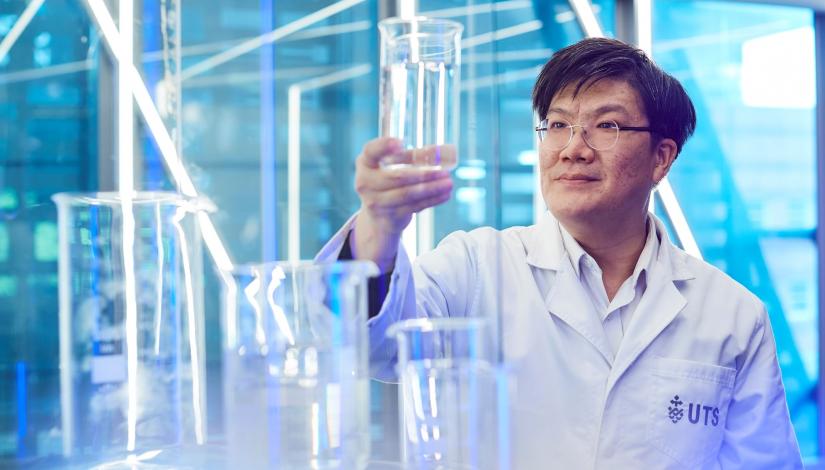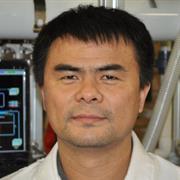This new method of water purification has the potential to have a significant impact on agriculture not only in drought-prone Australia but also in desert countries like Saudi Arabia. It has already been tested in Australia’s most important agricultural region, the Murray–Darling Basin, where saline groundwater is a threat to food production but could be turned into a source of recovered water.
“Our concept has immense potential to solve global freshwater scarcity for growing food,” says Professor Hokyong Shon, Deputy Director of the Centre for Technology in Water and Wastewater at the University of Technology Sydney (UTS). “We want to ensure we can produce more water, and at a cheap cost.”
Professor Shon and collaborator Dr Sherub Phuntsho, also of UTS, have been working on forward osmosis (FO) process they first conceived of 10 years ago, amid farmers’ protests about a new water management plan for the Murray–Darling Basin and following the Millennium Drought of the 2000s.
The Millennium Drought was the worst drought in 200 years of European settlement until eclipsed recently – highlighting again the need to address the water challenge in Australia and elsewhere.
“Our idea was to produce nutrient-rich irrigation water to supplement the reduced water allocation that was proposed in the Murray–Darling Basin Plan at the time,” Prof Shon says. Their concept was fertiliser-drawn forward osmosis (FDFO).
What’s forward osmosis?
Osmosis is the natural phenomenon by which all plants transport water within living cells. Forward osmosis is an engineered version of this natural phenomenon with the aim of recovering useable water.
Forward osmosis uses a semi-permeable membrane to separate water and the substances dissolved in it. What drives the separation is the difference in concentration between the two solutions either side of the membrane – one being a ‘draw’ made up of a high concentration solution while the other is the ‘feed’ solution, such as saline groundwater or wastewater. The osmotic pressure gradient induces a net flow of water from the feed through the membrane and into the draw.
The two UTS researchers’ FDFO process uses a concentrated fertiliser solution as the draw to extract water from the impaired water source, such as saline groundwater in the Murray–Darling. The diluted fertiliser solution produced by this process can then be used as irrigation water – as ‘fertigation’ – for crops.
The researchers built the world’s first pilot-scale FDFO membrane system in the mid-2000s. This low-cost, low-energy process has now been tested at multiple sites, for instance processing wastewater in a pilot project at an Australian mine site and fertilising plants, such as tomatoes, in ongoing experiments with the Royal Botanic Garden Sydney.
Our concept has immense potential to solve global freshwater scarcity for growing food
Professor Hokyong Shon
Membrane technology
Over the past decade Prof Shon and Dr Phuntsho have continued to refine the technology, especially the high-performance membranes at its heart, which must be incredibly thin – perhaps as thin as the membrane protecting the cells in our body – but still strong.
The work has drawn international attention from other researchers as well as industry and government agencies. Prof Shon and his team are collaborating with institutions including Korea University, King Abdullah University of Science and Technology in Saudi Arabia and Yale in the United States, along with partners such as Mitsui Chemicals Inc (MCI) in Japan and state-owned corporation WaterNSW in Australia.
“We consider the innovative works led by Prof Shon and Dr Phuntsho will have a significant impact in the agriculture industry, where a huge amount of water is required to grow foods,” says Hirozumi Matsuno, the manager of Mitsui Chemicals’ Next Generation Business Development Division in Japan.
“Sadly, because of climate change, water scarcity is extending to many parts of the world … At MCI we believe we must all continue to innovate with new technologies or improve existing technologies to save fresh water and to create new water sources from unconventional sources that we once considered impaired and useless.”
Among the unconventional sources the UTS researchers are investigating is human urine. They are now applying their expertise in forward osmosis to a process that will allow them to ‘mine’ the life-supporting nutrients nitrogen and phosphorous from urine, producing reusable water at the same time.
The presence of pharmaceuticals in, and the odour of, urine makes its direct application impractical. However, the researchers are achieving 99 per cent rejection of residual pharmaceuticals and recovering the majority of the nitrogen and phosphorous in their urine processing tests.
This work is being conducted very close to home, with the researchers installing a osmotic membrane bioreactor in the basement of the 15-storey building at the UTS campus in Sydney where they are based.
The output of the male urinals in the building is collected, stabilised and put through ‘ultrafiltration’ before being turned into a concentrated urine fertiliser using forward osmosis. The Royal Botanic Garden has tested the product on the vegetables lettuce and pak choy, finding no significant difference to the results from a commercially available complete fertiliser.
Prof Shon envisages the concentrate being used in cities for fertigation of green walls, parks and urban farms. The recovered water could be put to uses such as toilet flushing – in effect, creating a circle from source to re-use. Ultimately, this could mean toilet waste is treated at source in buildings, or in decentralised locations, rather than requiring big metropolitan treatment plants.
Whether it’s on salinity affected farms, or in city buildings, what was once waste could become a life-giving water supply.
Research team
-
Professor, School of Civil and Environmental Engineering
-
Senior Lecturer, School of Civil and Environmental Engineering





